20+ Sample General Release Forms
-
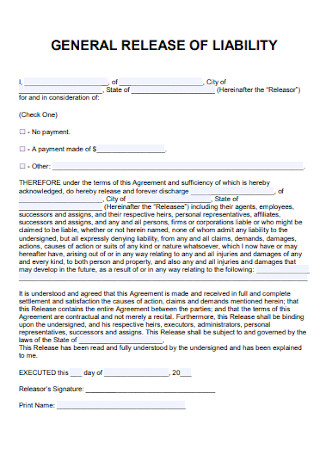
General Release of Liability Form
download now -
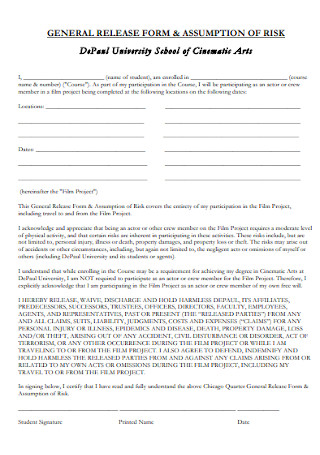
General School Release Form
download now -
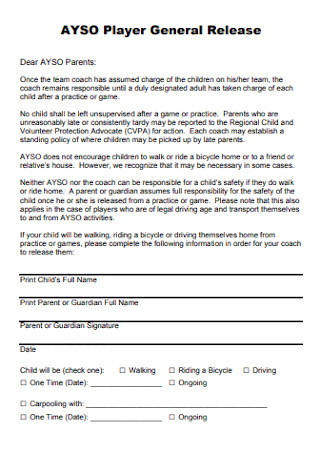
Player General Release Form
download now -
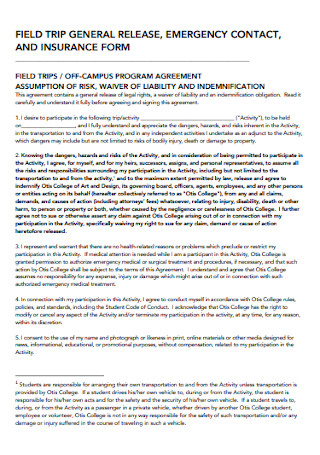
General Release Insurance Form
download now -
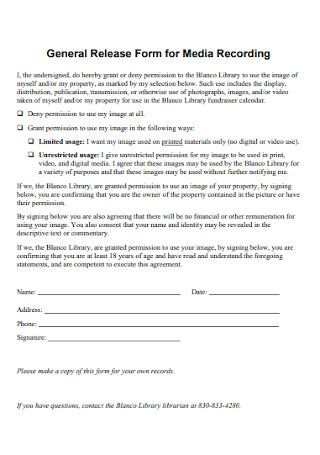
General Release Form for Media Recording
download now -

Standard General Release Form
download now -
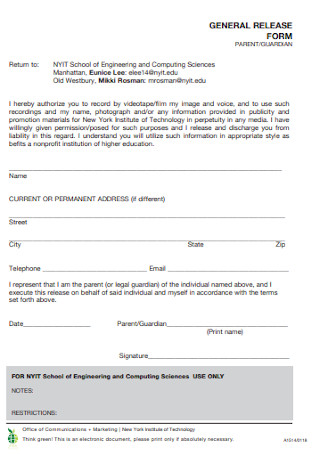
General Release Form Format
download now -
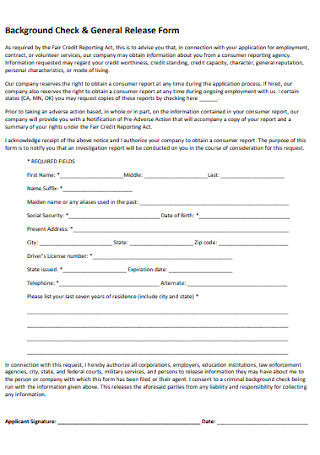
Background and General Release Form
download now -
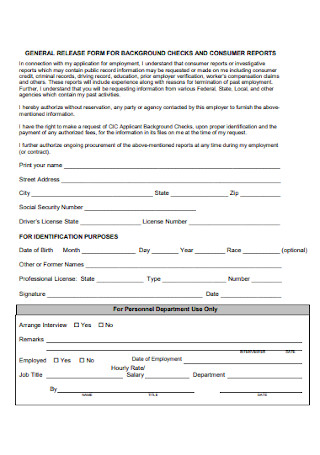
General Release Report Form
download now -
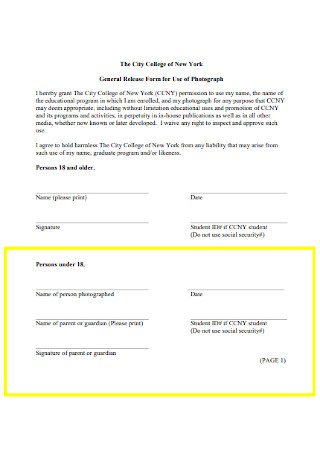
General Release Form for Use of Photograph
download now -
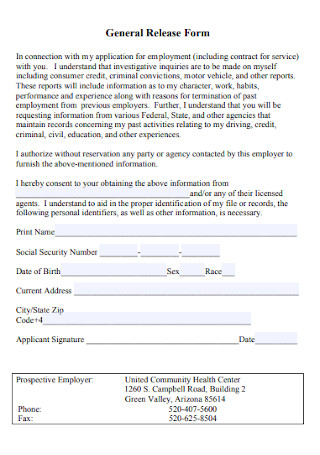
Simple General Release Form Template
download now -
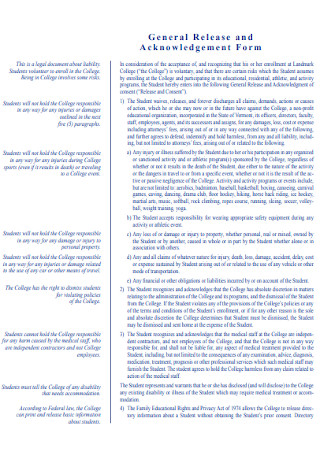
General Release and Acknowledgement Form
download now -

Preschool General Release Form
download now -

General Release Authorization Form
download now -

General Programs Release Form
download now -
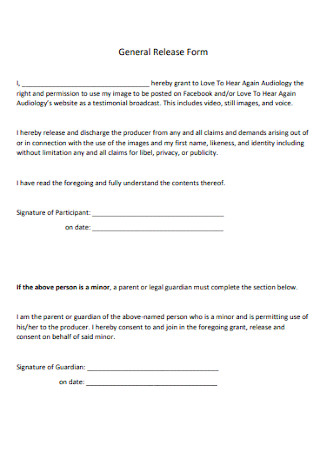
Formal General Release Form
download now -
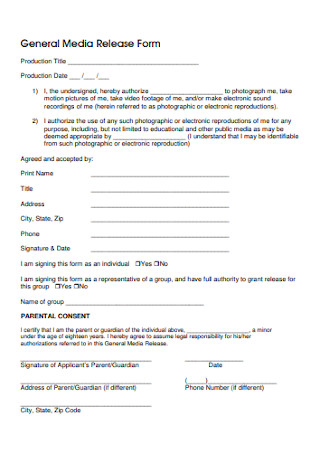
General Media Release Form
download now -
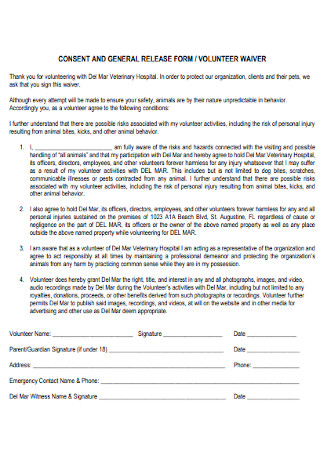
Consent and General Release Form
download now -
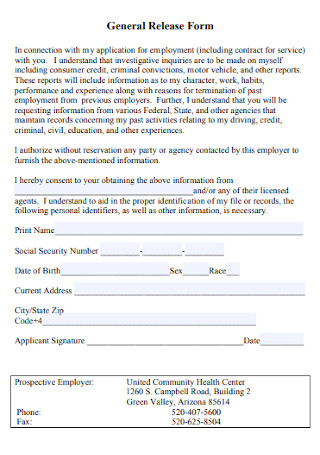
General Release Form Format
download now -
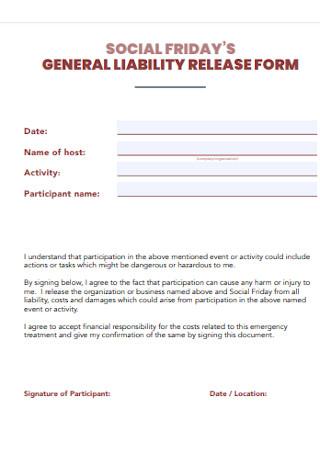
General Social Release Form
download now -
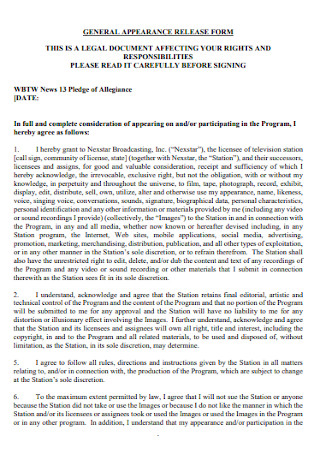
General Appearance Release Form
download now
FREE General Release Form s to Download
20+ Sample General Release Forms
What Is a General Release Form?
Why Are General Release Forms Important?
What Are the Types of General Release Forms?
How to Make a General Release Form
FAQs
What are the other names of a general release form?
What is a settlement agreement?
Do you need consideration in general release forms?
What Is a General Release Form?
A general release form is a formal agreement form between a releasor (someone who agrees for potential claims to be released) and the releasee (the person who is released from possible claims). This document tackles consent wherein the releasor surrenders one’s rights to carry out claims against the releasee in the future. Although a general release form works in different ways depending on the type of release form used, the common denominator is that it is a legal document that outlines the requirements and stipulations to be agreed upon by mutual parties.
Why Are General Release Forms Important?
Whether you come from a big or small business, a general release form has many nuances because there are all sorts of release forms such as model release, liability release, tort claim release, and other types. And to discover the many important reasons to consider general release forms, here are the most significant factors:
Prevents Unexpected Lawsuits
Probably the most important reason to come up with a general release form is that it is a legally binding agreement. That means the form can help you prevent lawsuits in case another party whom you used to work with decides to run a dispute against you. In short, general release forms waive parties to create claims against you or your business.
Sets Legal Rules
More so on the general release form’s function as a legally binding document, the form sets rules to be in a professional and healthy relationship with another party. So if you are the releasee or the person released from potential future claims, you are guaranteed to be safe from the releasor to make claims about you. The best part is that the document states obligations and rights that are legally acceptable to be fair for both parties, such as the terms to exchange one’s release or right to sue.
Allows the Use of Works Contributed by Others
Release forms allow continuous use of works contributed by those whom you used to work with. An example is when a photo or video shoot is done years ago and your model somehow doesn’t want you to use the video or photo involving her/him/them for your business in the present. The model can’t do that if she/he/they already signed a general release form before.
Displays a Detailed Set of Data
The form itself is a very detailed document just like what you would expect from a standard contract or agreement. Expect to see the complete names of both parties, the different permissions granted, the effectivity date, special considerations, and many more. So in case you have queries about claims, consent, and general release concerns, simply refer to the general release form for answers.
Works in Varied Forms
Don’t forget that a general release form has tons of functions because what set of claims is involved would differ from one industry to another. Claims may be related to minor damage to a car in an automobile business, a defamation statement in a published work, or using a model’s photo for other purposes. And it is very important for general release forms to detail the set of claims and what permissions are granted to clarify what is allowed or not.
What Are the Types of General Release Forms?
It has already been reiterated in this post that general release forms have numerous types and that they work in different ways per industry. But what exactly are these types? In this section, get to know the most common types of general release forms and how they work.
How to Make a General Release Form
Now for the real deal, are you ready to create your own general release form? Don’t feel intimidated by this legal document because it is quite easy to make, as long as you know what set of content and format should be there. And you’ll find a smooth and efficient experience in the process when you follow these basic steps on how to make general release forms:
Step 1: Edit a Sample General Release Form
Check out the full collection of sample general release form templates in this article so you can start building the form without bothering to start from scratch. Each sample is preformatted which means you will only be concerned with the finishing touches such as labeling and redesigning the general release form—super easy. Also, you may optimize other templates related to general release forms such as waiver forms, release agreements, and so much more. Customize a template now!
Step 2: Specify the Purpose of the Form
Indeed, general release forms are made to tackle consent concerns for general purposes but there are different terms, conditions, and specifications per type of release. For example, you can’t use the same form for both medical records release and a photo release as they function differently. The key is to identify your main purpose; what is the general release form for? Then, it will be easier to lay out the details in the form.
Step 3: Insert the Elements of a General Release Form
A standard general release form contains the following elements: the title (general release form or the specific type of release form), the releasor’s name, the release’s name, the effectivity date, details regarding the produced activity or project, all the granted permissions, special considerations (payment agreement or crediting obligations), and the signatures of both parties. Make sure these elements are covered in the general release form because incomplete data would lose the purpose of the document. You can also insert more parts as long as they are still relevant.
Step 4: Clarify the Specifications and Seek Help
The most crucial part of writing the general release form is to make sure all the specifications are correct. This is where it gets tricky because you might have mentioned a specification that isn’t legally acceptable in your state. And since laws differ per area, you really need to seek professional help such as lawyers to be guided on the legally appropriate specifications of a general release form. Keep in mind that you have to be fair with the releasor too by not abusing what they contributed in working with you.
Step 5: Review the Whole Form and Affix Party Signatures
Lastly, conduct a final evaluation of the general release form and allow the releasor to read and sign the form. Both of you should affix signatures to confirm the agreement and make sure that the general release form’s terms are officially effective. Then, keep a copy of that form, and don’t ever lose it. You never know if an actual issue might come up someday that showing the general release form could save you from a dispute.
FAQs
What are the other names of a general release form?
A general release form can also be referred to as a legal release form, liability release form, or simply a release form.
What is a settlement agreement?
A settlement agreement works similarly to a release form that settles possible lawsuits among parties, as mentioned in the agreement; that means no lawsuit is granted between parties moving forward.
Do you need consideration in general release forms?
Indeed, general release forms could use consideration because it is essential to validate the release; the release form itself is created for the sake of valuable consideration.
Prepare for the worst circumstances that may happen in business and one way of showing that is to craft a solid general release form that waives the right of the party that signed it to sue you or your company in the future. With this form and a well-made binding contract, you won’t have to deal with arduous and highly expensive potential legal disputes. Thankfully, you can create the said form anytime using sample general release form templates.
